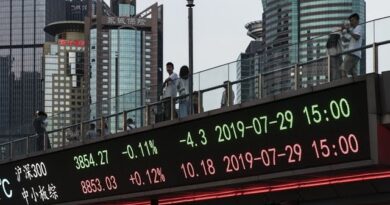
OPEC+ Rules in an Increasingly Tight Oil Market

The OPEC+ group is firmly back in control of the oil market and has the power to have it extremely tight in the second half of the year should it choose to do so, industry executives and hedge fund managers say.
The market is growing increasingly bullish on oil, expecting robust global demand growth and supply constraints, including OPEC and Russia’s production cuts, to push prices even higher in the summer.
With Brent oil prices breaking above $90 a barrel, there is room for further upside amid tighter markets and heightened geopolitical risks, investment banks say, not ruling out $100 oil this year.
The trajectory of oil prices over the next year is largely in the hands of the OPEC+ alliance of the top Middle Eastern producers and Russia, according to Sebastian Barrack, head of commodities at hedge fund giant Citadel, which had $61 billion in investment capital as of April 1.
The OPEC+ group has “definitely regained control” of the market, Barrack said at the FT Commodities Global Summit in Lausanne, Switzerland, this week.
If the alliance decides in early June to keep its current cuts after the end of the first half, we could see an “extremely tight” oil market in the second half of the year, Citadel’s executive said, adding that the timing of OPEC+’s potentially eased cuts and their volume “will define where prices go in the next 12 months.” Related: OPEC+ Faces Fork in the Road
Right now, prices are going up, as geopolitical concerns linger in the Middle East, demand holds strong and could turn out stronger than expected, and supply and infrastructure issues hold back production and exports, from Mexico to Russia.
Top traders and forecasters, as well as investment banks, have upgraded their price and demand forecasts in recent weeks.
Oil prices are set to trade in the range between $80 and $100 per barrel this year, Russell Hardy, chief executive at Vitol Group, said at the FT summit this week.
The world’s largest independent oil trader also expects robust global oil demand growth in 2024, at around 1.9 million barrels per day (bpd) higher than in 2023, Hardy said.
If this forecast pans out, this year’s growth in oil consumption will not be too far off the bumper increase in demand in 2023.
The U.S. Energy Information Administration (EIA) raised its 2024 and 2025 forecasts of global oil consumption by between 400,000 bpd and 500,000 bpd, due to a revision of historical data for 2022 and to the “current market dynamics,” the EIA said in its monthly Short-Term Energy Outlook (STEO) on Tuesday.
Morgan Stanley sees heightened geopolitical risk pushing Brent prices to $94 per barrel in the third quarter as the bank lifted its price forecast by $4 a barrel compared to its previous projection. Last month, Morgan Stanley had already hiked its third-quarter oil price forecast by $10 per barrel, to $90, on the back of expected tighter markets in the summer.
In recent weeks, banks, including JP Morgan, have said that oil prices could hit $100 per barrel by the end of the summer. However, demand destruction could prevent prices from reaching triple digits, JP Morgan says.
Still, analysts and industry executives believe that OPEC+ would reverse at least part of the cuts if prices run up to $100 as it would look to avoid demand destruction, stronger response to high prices from U.S. shale, and a potential loss of longer-term demand for OPEC+ crude.
If OPEC+ rolls over the cuts beyond June, “we will see a level of tightness in the market that will be very constraining to the market, and high prices will have to go and help destroy demand to solve that problem,” Citadel’s Barrack said at the FT Commodities Global Summit.
As tempting as it may sound for OPEC to sell oil at $100 a barrel, the cartel may not be willing to risk another inflation shock that could cripple demand.
By Tsvetana Paraskova for Oilprice.com
More Top Reads From Oilprice.com:



